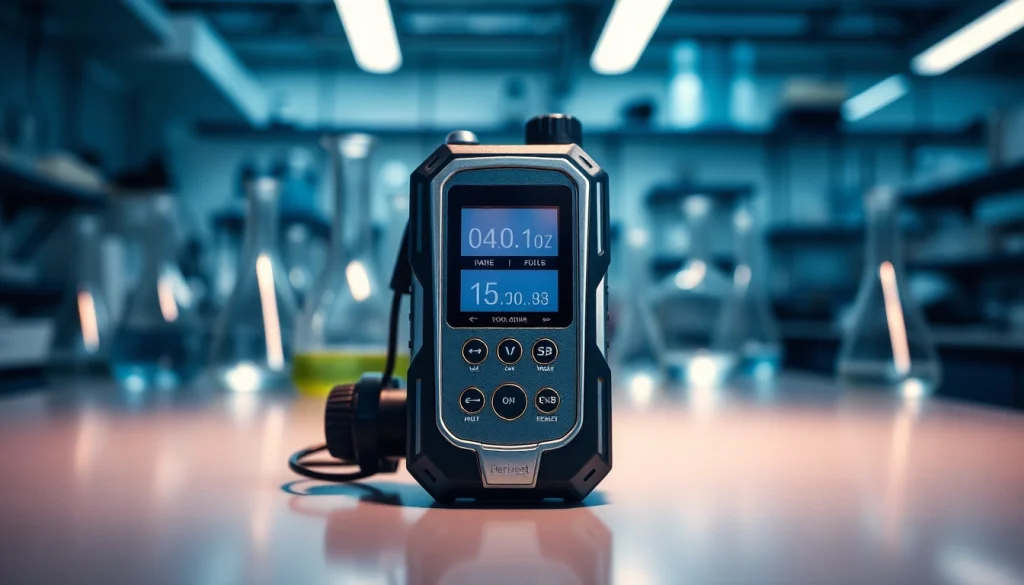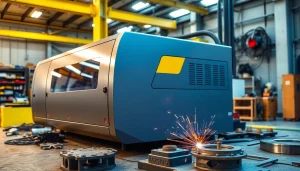
Understanding Hydrogen Chloride and Its Risks
What is Hydrogen Chloride?
Hydrogen chloride (HCl) is a colorless gas at room temperature, characterized by a pungent odor and corrosive properties. It is formed when hydrogen and chlorine gases react in the presence of heat. In industrial contexts, hydrogen chloride is commonly encountered in various manufacturing processes, including the production of PVC, fertilizers, and other chemicals. When dissolved in water, it forms hydrochloric acid, a highly corrosive solution widely used in different applications such as pickling, cleaning, and pH control.
Health Risks Associated with Hydrogen Chloride Exposure
Exposure to hydrogen chloride can pose serious health risks, making it essential for industries to implement proper monitoring and safety measures. Inhalation can lead to irritation of the respiratory tract, resulting in coughing, choking, and potentially severe pulmonary damage. Skin contact with hydrogen chloride can cause corrosive burns, and ingestion can lead to internal injuries. Long-term exposure to low concentrations can contribute to chronic respiratory issues and other health problems, underscoring the importance of using a reliable Hydrogen Chloride gas detector to monitor levels and protect workers.
Regulatory Standards for Hydrogen Chloride Levels
Various health and safety regulations govern permissible levels of hydrogen chloride in the workplace. Organizations like the Occupational Safety and Health Administration (OSHA) set exposure limits to protect workers from harmful effects. OSHA stipulates a permissible exposure limit (PEL) of 5 ppm (parts per million) as an 8-hour time-weighted average. The American Conference of Governmental and Industrial Hygienists (ACGIH) identifies a threshold limit value (TLV) at a similar concentration. Adhering to these regulations is critical for ensuring a safe working environment in industries that handle hydrogen chloride.
Importance of Hydrogen Chloride Gas Detectors
How Hydrogen Chloride Gas Detectors Work
Hydrogen chloride gas detectors are designed to continuously monitor the concentration of HCl in the air. They utilize various sensing technologies, including electrochemical sensors, infrared sensors, and metal-oxide semiconductor sensors, to detect the presence of hydrogen chloride. Upon detection, these devices often activate alarms, enabling immediate action to mitigate exposure risks. Additionally, most modern detectors come equipped with data logging capabilities, which allow for tracking historical levels of exposure and compliance with safety regulations over time.
Key Features to Look for in a Hydrogen Chloride Gas Detector
When selecting a hydrogen chloride gas detector, several key features should be considered:
- Response Time: A fast response time is crucial for immediate alerting and safety.
- Calibration: The detector should allow for easy calibration to ensure accuracy in measurements.
- Alarm System: Visual and audible alarms notify personnel of dangerous levels quickly.
- Portability: Depending on the application, some detectors are designed to be portable for use in various locations.
- Battery Life: Long battery life reduces the frequency of maintenance checks.
Benefits of Using a Hydrogen Chloride Gas Detector
The primary benefits of using a hydrogen chloride gas detector encompass enhanced safety, compliance with regulations, and improved operational efficiency. Early detection of harmful gas concentrations helps prevent health issues among employees and minimizes the risk of accidents. Furthermore, consistent monitoring can significantly bolster workplace safety culture and demonstrate commitment to employee health. From an operational standpoint, integrating gas detection technology can also streamline safety protocols, thereby allowing teams to focus on productivity without compromising safety.
Choosing the Right Hydrogen Chloride Gas Detector
Factors to Consider When Selecting a Detector
Selecting the appropriate hydrogen chloride gas detector involves several critical factors. First, it’s vital to assess the environment where the detector will be used—consider potential hazards, temperature ranges, and humidity levels. Additionally, determine whether a fixed or portable detector is more suitable based on operational needs. User-friendly interfaces, maintenance requirements, and warranty options are also essential considerations, as they impact the overall usability and longevity of the device.
Comparing Detector Brands and Models
Numerous brands manufacture hydrogen chloride detectors, each offering a variety of models tailored to different needs. When comparing options, it’s important to look at factors such as sensing technology, sensitivity, battery life, and safety certifications. Reviews and ratings can also provide insights into reliability and performance in real-world applications. Brands that are known for their reputation in industrial safety equipment often provide robust solutions, so researching their offerings can help in making an informed decision.
Cost-Effectiveness of Hydrogen Chloride Gas Detectors
The cost of hydrogen chloride gas detectors can vary widely based on features and technology. While it may be tempting to choose the least expensive option, considering total cost of ownership is crucial. This includes initial purchase price, maintenance costs, and potential costs associated with undetected exposure incidents. Investing in a high-quality detector can save money in the long run by preventing health-related costs, legal liabilities, and production downtime due to accidents or compliance failures. Moreover, many detectors come with service plans that can help keep maintenance costs predictable.
Installing and Maintaining Your Hydrogen Chloride Gas Detector
Installation Best Practices for Accuracy
Proper installation of hydrogen chloride gas detectors is vital for ensuring accurate readings and effective safety monitoring. Placing detectors in locations where hydrogen chloride is most likely to accumulate is essential; for example, near potential leak sources or in enclosed spaces where gas buildup can occur. Additionally, avoid installation in areas with high air turbulence or interference from other gases, which can affect sensor accuracy. Following the manufacturer’s guidelines during installation will promote optimal detector performance.
Regular Maintenance and Calibration Procedures
Regular maintenance and calibration ensure that hydrogen chloride gas detectors operate effectively over time. It’s recommended to establish a routine inspection schedule that includes testing sensor functionality, cleaning filters, and updating software as needed. Calibration should be performed according to the manufacturer’s recommendations, typically every 6-12 months for most fast-response detectors. Keeping detailed records of maintenance procedures can help in regulatory compliance and provide insights into detector performance trends.
Troubleshooting Common Detector Issues
Understanding common troubleshooting steps can aid in resolving issues with hydrogen chloride gas detectors. Common problems include false alarms, sluggish responses, and sensor drift. For false alarms, reviewing the location and surrounding conditions may help identify misleading readings, while sluggish responses might indicate the need for calibration or maintenance. In cases of sensor drift, recalibration is often necessary to restore accurate readings. Educating staff on basic troubleshooting can enhance overall safety by reducing downtime due to detector issues.
Future Trends in Gas Detection Technologies
Advancements in Hydrogen Chloride Gas Detection
The future of hydrogen chloride gas detection technology is geared towards enhanced accuracy, sensitivity, and reliability. Innovations in sensor technology, including nanomaterials and advanced algorithms, promise to increase detection capabilities even at trace levels. Additionally, advancements in wireless detection systems are allowing for greater flexibility in monitoring locations remotely, leading to improved safety protocols in industrial environments.
Integration of Smart Technologies in Gas Detectors
The growing trend towards smart technologies is revolutionizing gas detection systems. Integrating Internet of Things (IoT) capabilities allows hydrogen chloride detectors to continuously relay data to centralized monitoring systems. This real-time data access supports analytics that can predict potential safety issues and streamline responses. Users can receive alerts directly on their smartphones, ensuring immediate awareness of hazardous conditions, even when they are not physically present at the site.
Predictions for the Future of Safety in Industrial Settings
As safety regulations become stricter, the future of safety in industrial settings will increasingly hinge on the integration of advanced gas detection technologies. Predictive analytics and machine learning will likely characterize future monitoring systems, helping businesses not only comply with safety standards but also anticipate and mitigate risks before they escalate. Moreover, the emphasis on sustainable safety solutions will drive innovation in the production of environmentally friendly detectors, enhancing the overall safety landscape of industrial operations.





